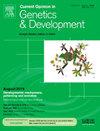No more nonsense: evaluating poison exons as therapeutic targets in neurodevelopmental disorders
IF 3.6
2区 生物学
Q2 CELL BIOLOGY
引用次数: 0
Abstract
Alternative splicing of pre-mRNA generates multiple transcripts from a single gene, contributing to transcriptomic diversity. Alternative splicing can result in inclusion of poison exons (PEs), which contain a premature stop codons (PTC) that target transcripts for nonsense-mediated decay (NMD). PE-containing transcripts are prevalent in the brain, where they can play roles in fine-tuning mRNA and protein levels. Antisense, or splice-switching, oligonucleotides (ASOs/SSOs) are used to target PEs to reduce their inclusion and treat neurodevelopmental disorders. ASOs/SSOs address the genetic causes of disease and are precision therapies that can provide a cure rather than only address disease symptoms. This review explores the role of PEs in the brain, therapeutic targeting of PEs, and current challenges in our understanding of PEs.
没有更多的废话:评估毒性外显子作为神经发育障碍的治疗靶点
前mrna的选择性剪接产生来自单个基因的多个转录本,有助于转录组多样性。选择性剪接可导致毒性外显子(PEs)的包含,其包含一个针对无义介导衰变(NMD)转录本的过早停止密码子(PTC)。含有pe的转录本在大脑中普遍存在,它们可以在微调mRNA和蛋白质水平方面发挥作用。反义或剪接开关寡核苷酸(ASOs/SSOs)用于靶向pe以减少其包涵并治疗神经发育障碍。aso / sso解决了疾病的遗传原因,是一种精确的治疗方法,可以治愈疾病,而不仅仅是解决疾病症状。这篇综述探讨了pe在脑中的作用,pe的治疗靶向,以及目前我们对pe的理解面临的挑战。
本文章由计算机程序翻译,如有差异,请以英文原文为准。
求助全文
约1分钟内获得全文
求助全文
来源期刊
CiteScore
7.90
自引率
0.00%
发文量
102
审稿时长
1 months
期刊介绍:
Current Opinion in Genetics and Development aims to stimulate scientifically grounded, interdisciplinary, multi-scale debate and exchange of ideas. It contains polished, concise and timely reviews and opinions, with particular emphasis on those articles published in the past two years. In addition to describing recent trends, the authors are encouraged to give their subjective opinion of the topics discussed.
In Current Opinion in Genetics and Development we help the reader by providing in a systematic manner:
1. The views of experts on current advances in their field in a clear and readable form.
2. Evaluations of the most interesting papers, annotated by experts, from the great wealth of original publications.[...]
The subject of Genetics and Development is divided into six themed sections, each of which is reviewed once a year:
• Cancer Genomics
• Genome Architecture and Expression
• Molecular and genetic basis of disease
• Developmental mechanisms, patterning and evolution
• Cell reprogramming, regeneration and repair
• Genetics of Human Origin / Evolutionary genetics (alternate years)

 求助内容:
求助内容: 应助结果提醒方式:
应助结果提醒方式:


